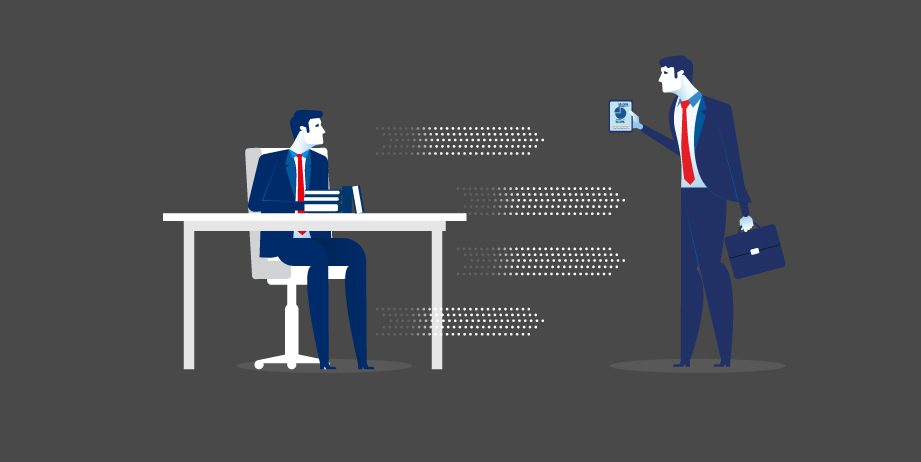More and more companies are transitioning from traditional training methods like classroom training and webinars. They’re recognizing the need for a change and transitioning from traditional training to sales enablement and readiness instead. According to CSO Insights, 59.2% of surveyed companies currently have a sales enablement program. Another 8.5% plan to start one this year. Let’s take a look at what’s causing this trend.
Why make the change now?
Companies are recognizing they need a change. Here are some symptoms they’re experiencing. These are clear signs that what they’re doing isn’t working anymore.
Quota attainment continually decreasing: It’s been shown that the percentage of sales reps hitting their quotas have decreased year after year since 2012 and is now 53%. You can improve sales performance to meet ever-increasing targets with sales enablement and readiness.
Sales’ declining ability to close Marketing-provided leads: An inability to continually hone sales skills with classroom training and webinars is an issue many companies fact. Sales enablement, when implemented properly, addresses this issue.
Uncertain of what exactly is working and what needs to change: Sales enablement facilitates identification of weaknesses and strengths. Plus, it makes it easier to implement corrections and adjustments needed to continuously fine-tune the sales process so it keeps pace with ongoing market changes.
Sales rep ramp times are too long: Today’s sales reps average 2 years on the job before changing companies. With an average ramp time of 6 months to full productivity, reps are only effective for three-quarters of the time they are in any given position. The hiring and training process is too costly for team members to be inefficient for such a long time. Sales enablement initiatives shorten ramp time. Not only that, the ongoing learning and growth associated with sales enablement increases rep retention because it fulfills the desire of today’s’ employees for continual improvement.
Sales processes didn’t match reality: Reps are being trained one way and then having to make their own adjustments to make it work on the job. Enablement and readiness ensure that training and practice are properly aligned or corrected as needed.
Reps are only spending a fraction of their time selling: It’s been documented that sales reps are actually only spending 37% of their time on revenue-generating activities. Enablement corrects this issue by increasing their selling time and making them more effective as well.
Competitors are winning: Competitors who have implemented enablement and readiness are closing more business, due to increased efficiency and effectiveness. It hurts companies who haven’t jumped on the enablement/readiness bandwagon yet. Companies are feeling the pain, by losing market share. They know they need to make a change before it’s too late.
Why are sales enablement and readiness better?
It’s been known for some time that training isn’t productive by itself. Without ongoing coaching and reinforcement, 90% of information shared in a traditional classroom or webinar training is forgotten within a month’s time. There are many reasons that sales enablement and readiness are more favorable. Here are some of the more popular ones:
- More cost-effective: Besides being ineffective, traditional training is costly, involving expenses such as room rental, transportation, trainers, and lost opportunity. Plus it’s time-consuming and reduces staff efficiency by cutting into valuable rep selling time. Sales enablement and readiness keeps costs under control by keeping reps on the job and productive while eliminating many of the additional costs.
- Proactive: Current sales enablement practices allow companies to push sales learning or updates, instead of creating something and hoping it will be used/consumed. This creates a state of perpetual readiness for successful rep interactions of any type with prospects and customers.
- Tailor-made learning paths: Transitioning from classroom and webinar training allows for personalized training. It means that not everyone needs to go through the same training, in the same order, and at the same pace. Reps are able to take quizzes to determine their individual training needs and priorities. This determines their specific learning path.
- Internally sourced: It used to be that companies would hire external experts to train their salesforce. Enablement/readiness allows for the sharing of best practices through of an internally-sourced library. It can be approved by the enablement/operations and accessible/searchable by all, in bite-sized modules. This library may include examples, demonstrations, and explanations of how to do or accomplish certain goals or skills.
- Bite-sized/spaced learning: Small, frequent learning sessions minimize the impact on busy schedules and provide repetition that reinforces learning. They’re easy to consume and easy to apply on the job. In fact, research by Hermann Ebbinghaus proves that this is the most effective way to learn and retain information, change behaviors, and develop new skills.
- Available on-demand: Since sales enablement content is available anywhere and anytime, consistent participation is easy to fit into even the busiest schedule. This eliminates the negative impacts of taking reps off the job for training.
- Facilitates practice and feedback: Enablement makes it possible for reps to practice new skills in a safe environment by recording themselves on the go. It removes the need to be in an office or to schedule meetings, to know what to strengthen and adjust, while learning new methods or information. Feedback, built into the process, reinforces correct behaviors and prevents the development of bad habits or incorrect information.
- Allows measurement: Enablement and readiness simplify the documentation and measurement of progress through role-plays, quizzes and other methods. So often, companies don’t measure traditional training results or they are unmeasurable. The new way of learning makes it easy.
I’m sure that it’s clear now why companies are transitioning from traditional training methods to more impactful enablement and readiness. Which methods sound better to you? If you need more information about this topic, read this article about readiness or this article about sales training and enablement.



 By Rahul Mathew
By Rahul Mathew

